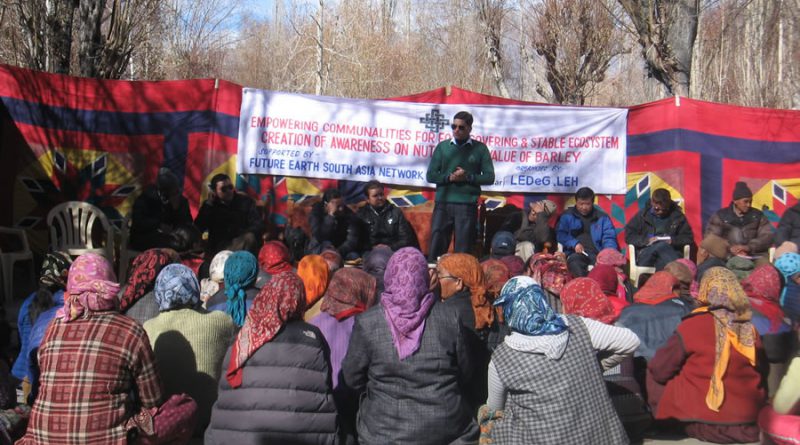LIVEABLE INCLUSIVE AND RESILIENT HIMALAYAN CITY- STRENGTHEN CAPACITIES OF LADAKH AUTONOMOUS HILL DEVELOPMENT COUNCIL”
Leh town of Ladakh located at an elevation of 3,500 meters ASL, (12,000 feet) in Indian Himalaya, is one of the highest cities in the world and region experiences a minimum temperature of -30°C in winter and a maximum of 35°C in summer. A cold desert half way up the Himalayan mountains, the safety and self-sufficiency of the region is determined entirely by climatic and precipitation conditions higher up in the mountains. High snowfall causes floods and extends the winters which destroy crops and tourism; low snowfall results in water and food shortages. Roads to Ladakh remain closed for 6 months of the year, making access difficult and products expensive. Since sometimes the impact of climate change has also become more pronounced as rainfall, snowfall and other patterns have become more erratic and unpredictable. Uncharacteristic, massive floods in 2010 and 2015 killed peoples, destroyed livelihoods and assets of over 50,000 people in the region. Here, more than almost anywhere else, people feel and believe they have to take care of themselves as help from outside is difficult and unreliable. The town of Leh has a population of about 45,000. Given the unique and beautiful terrain, over 250,000 tourists visits Leh in 2017 (up 8x in the past 15 years) during the short summer season (May- September) and about 100,000 temporary migrant workers from across India also arrive to serve tourists and work on infrastructure and construction projects. During the winter, all activity goes into hibernation. Tourism has bought prosperity to the region over the past 15 years but is also putting huge stress on the limited natural resources and infrastructure, bringing problems that were unheard of 10 years ago. Traffic congestion, lack of parking spaces, increasing population of stray animals, ruthless spread of solid waste, and disposal of liquid waste were the common issues, which is shaping towards major problems of future. Leh’s high altitude (hence low air pressure), extreme temperatures, limited finances and difficult access, a combination that no other major city in the world is subject to, limits the technological options available for addressing these issues.
Objective:
This Project aims to help the local government of Leh to overcome the gaps such as lack of technical knowledge, lack of leadership and management abilities, and lack of plan etc. so as to manage natural resources of the region more effectively, improve the urban environment and plan and implement critical projects effectively and sustainably. Therefore, the overall objective of this action is to enhance capacity of local government to make Leh more liveable and environmentally sustainable and become a symbol of resilient and inclusive urban development that raises quality of life of all residents including the urban poor.
Target group(s) :
1) Functionaries and elected representatives of Ladakh
2) District / State level agencies involved in sanitation and public services
3) ~12,000 people from the poorest, under-served urban settlements in Leh
Beneficiary(ies):
a) 270,000 residents of Leh
b) 250,000+ annual visitors to Leh and surrounding areas
c) The sister city Kargil—2nd largest city in Ladakh after Leh
d) Urban towns of 11 mountain states of India
Project Partners:
Ladakh Ecological Deveopment Group (LEDeG), Bremen Overseas Research and Development Association (BORDA) and Consortium for DEWATS Dissemination Society (CDD)
Project Period:
March 2018- March 2020.
